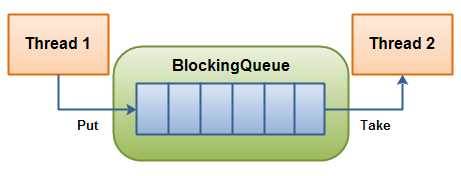标签:
Universal-Image-Loader中,对Task的处理有两种方法:FIFO,LIFO
在core/assist下的deque包中,其主要是定义了LIFOLinkedBlockingDeque,其他的几个均在java.util和java.util.concurr中
下面我们对queue和deque及其相关的类撸一撸,看看它们的区别
1. Queue:队列, 继承于Collection,定义了几个与队列相关的方法
2. Deque:双向队列,继承于Queue,定义了和双向操作相关的方法
3. BlockingQueue:阻塞队列
4. BlockingDeque:双向阻塞队列
5. AbstractQueue: 实现了队列的几个基本方法,
6. LinkedBlockingQueue:线程安全,阻塞队列,默认长度是Integer.MAX_VALUE
按 FIFO(先进先出)排序元素。队列的头部 是在队列中时间最长的元素。队列的尾部 是在队列中时间最短的元素。 链接队列的吞吐量通常要高于基于数组的队列。

1 /** 2 * Linked list node class,单向的列表 3 */ 4 static class Node<E> { 5 E item; 6 /** 7 * One of: 8 * - the real successor Node 9 * - this Node, meaning the successor is head.next 10 * - null, meaning there is no successor (this is the last node) 11 */ 12 13 Node<E> next; 14 Node(E x) { item = x; } 15 }
7. LinkedBlockingDeque:线程安全,双向阻塞队列,其实现主要是基于两个Node,默认长度是Integer.MAX_VALUE

1 /** Doubly-linked list node class 双向链表*/ 2 static final class Node<E> { 3 /** 4 * The item, or null if this node has been removed. 5 */ 6 E item; 7 8 /** 9 * One of: 10 * - the real predecessor Node 11 * - this Node, meaning the predecessor is tail 12 * - null, meaning there is no predecessor 13 */ 14 Node<E> prev; 15 16 /** 17 * One of: 18 * - the real successor Node 19 * - this Node, meaning the successor is head 20 * - null, meaning there is no successor 21 */ 22 Node<E> next; 23 24 Node(E x) { 25 item = x; 26 } 27 } 28 29 /** 30 * Pointer to first node.头节点 31 * Invariant: (first == null && last == null) || 32 * (first.prev == null && first.item != null) 33 */ 34 transient Node<E> first; 35 36 /** 37 * Pointer to last node.尾节点 38 * Invariant: (first == null && last == null) || 39 * (last.next == null && last.item != null) 40 */ 41 transient Node<E> last;
8. LIFOLinkedBlockingDeque:后进先出,双向阻塞队列,仅仅override两个方法

1 @Override 2 public boolean offer(T e) { 3 return super.offerFirst(e); 4 } 5 6 /** 7 * Retrieves and removes the first element of this deque. This method differs from {@link #pollFirst pollFirst} only 8 * in that it throws an exception if this deque is empty. 9 * 10 * @return the head of this deque 11 * @throws NoSuchElementException 12 * if this deque is empty 13 */ 14 @Override 15 public T remove() { 16 return super.removeFirst(); 17 }
阻塞队列的工作原理:一个线程(生产者)放入任务,另外一个线程(消费者)取出任务

上图参考链接:http://www.cnblogs.com/qiengo/archive/2012/12/19/2824971.html
Android开源框架:Universal-Image-Loader解析(四)TaskProcess
标签:
原文地址:http://www.cnblogs.com/luow/p/4488324.html